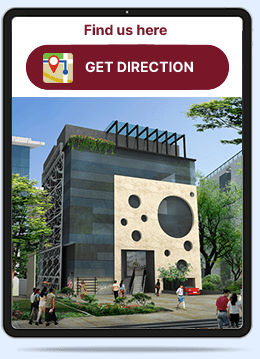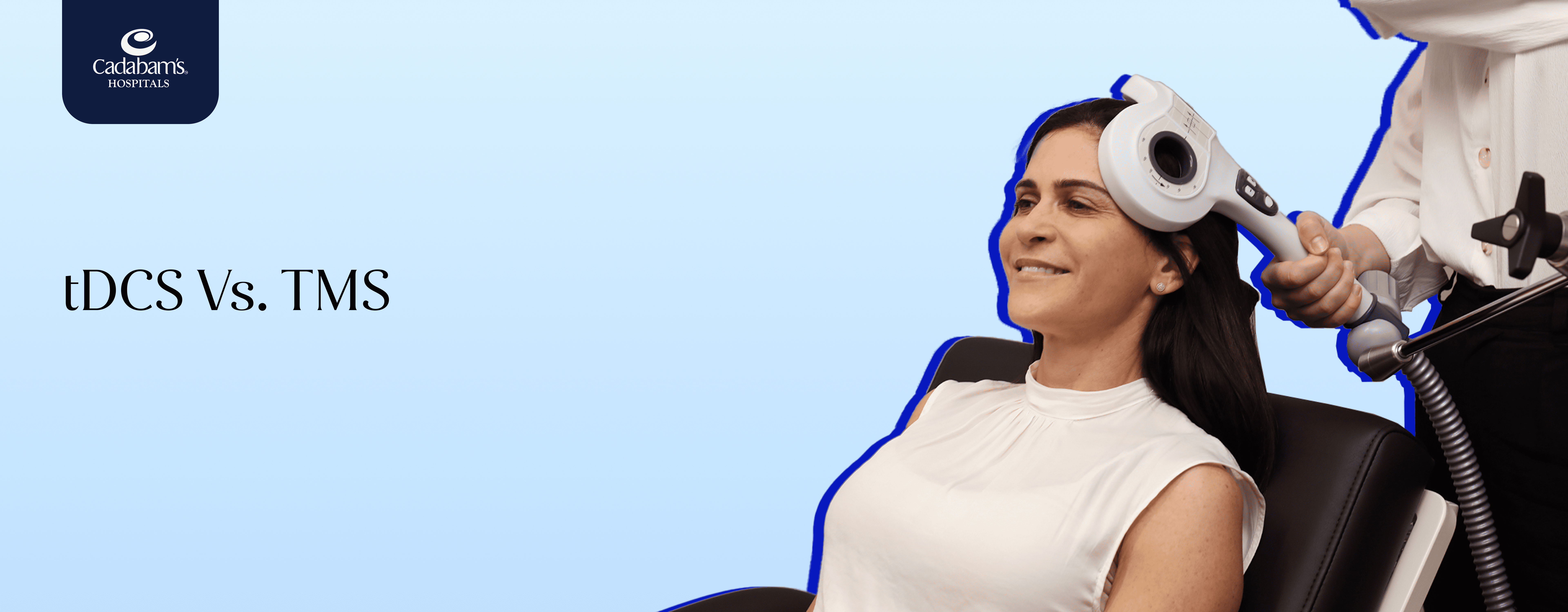Table of Content
Neurostimulation therapies like Transcranial Magnetic Stimulation, or TMS, and Transcranial Direct Current Stimulation, or tDCS. have lately emerged as effective treatment modalities for various mental health disorders, particularly in cases where other treatment methods, such as medication and psychotherapy, are inadequately effective. Both attempts to augment the activity of the brain, but they differ in their mode of operation and target different elements. When comparing TMS vs tDCS, both attempt to augment the activity of the brain, but they differ in their mode of operation and target different elements.
Introduction to Neurostimulation in Mental Health
Neurostimulation therapies are a cornerstone in mental health treatment because they can manipulate brain activity to temporarily relieve symptoms of mood disorders and other neurological conditions. These treatments confer non-invasive, targeted options for people who do not respond to more traditional approaches.
Perhaps two of the most recognised include TMS and tDCS; these have been immensely popular due to the overwhelming relief they offer from such conditions as depression, anxiety and PTSD. They have shown an effective result in improving brain health.
Understanding Transcranial Magnetic Stimulation (TMS)
Transcranial Magnetic Stimulation (TMS) is a non-invasive procedure that uses magnetic fields to stimulate nerve cells of the brain. These magnetic pulses stimulate neural pathways, thereby increasing symptoms in mentally ill patients. The devices that use TMS are big and quite often require office sessions.
This technology is effective in treating depression, anxiety, and other disorders, such as OCD and PTSD. This form of treatment assists patients by targeting brain areas that are responsible for mood regulation with very few side effects, such as headaches or discomfort on the scalp.
Exploring Transcranial Direct Current Stimulation (tDCS)
It is a portable, non-invasive device used in the delivery of low electrical currents to specify regions of the brain using electrodes attached to the scalp. The device can be compact enough to be used either clinically or at home. tDCS treats symptoms of depression, anxiety, and reduced cognitive function, and research has explored its usage in the enhancement of learning and memory.
It is further characterised by affordability, ease of access and minor side effects in the form of mild skin irritation or sensations of tingling. tDCS is a flexible neurostimulation approach that can easily be used for different mental health needs.
Effectiveness of tDCS vs TMS for Brain Health
The comparative effectiveness of the two methods shows that both TMS and tDCS treatments have been utilised as effective treatments for mood and cognitive disorders treatments. Due to its stronger stimulation, TMS is more often associated with immediate and pronounced effects; hence, it has been mainly used to treat serious ailments such as treatment-resistant depression.
tDCS will achieve its impact more slowly with its relatively mild current and is thus preferred at home. When more available and affordable treatments are being considered, tDCS may be an option whereas TMS remains the clinical intervention of choice.
TMS for Brain Health
TMS also receives high ratings for efficiency in treating mental health disorders, particularly major depressive disorders. Because magnetic pulses are applied to very specific areas of the brain, they help reset faulty neural circuits. Patients who undergo TMS often show striking improvement in mood and cognitive function after several sessions, with minimal or no side effects resulting from the intake of antidepressants. This makes TMS more appealing for long-term brain health management.
tDCS and Brain Health
Recently, tDCS has received attention because of its capability to enhance brain functioning and improve cognitive performance. Though less intensive in its current than TMS, it is believed to encourage neuroplasticity by the modulation of brain activity. Therapeutic as well as research applications can be found; tDCS is being tried for the improvement of mood regulation, enhancement of attention, and even pain management.
It is hence particularly useful for those individuals who seek less invasive and inexpensive means of improving their mental well-being.
Key Similarities and Differences Between TMS and tDCS
Even though both techniques are non-invasive neurostimulation that improves brain activity, there are several differences in many aspects.
Similarities between TMS vs tDCS
Both TMS and tDCS concern the betterment of brain functioning through external stimulation. They are non-invasive, referring to the fact that no surgical operations are involved, which itself makes them low risk compared to other interventions such as deep brain stimulation.
Both therapies are also indicated for use in similar psychological disorders, including depression, anxiety and cognitive impairment. Both seek to modify brain activities and enhance neural connections, thus helping an individual achieve their optimum level of mental health functioning.
Differences between TMS vs. tDCS
The most significant difference between these two methods is the modality of stimulation. TMS utilises magnetic pulses while tDCS uses direct electrical currents. TMS requires larger and more cumbersome machinery and, due to this, is generally carried out in clinical settings whereas tDCS devices are smaller and portable and can be utilised from the comfort of one's home.
Normally, TMS has quicker and more significant effects; hence, it is considered better for severe conditions, whereas tDCS provides a gradual improvement, which is suitable for mild ones and research purposes.
When Should You Choose Between TMS vs. tDCS?
Typically, the choice between TMS and tDCS depends on the individual’s severity level of their disorders and their personal preference. Therefore, it is recommended to consult with the professional for clearer perspectives.
When to Apply TMS
TMS is used for several severe, treatment-resistant conditions, such as major depressive disorder and OCD. It precisely targets specific areas of the brain. This precision provides immediate relief to those who have not found success with other therapies. TMS is best for patients who can commit to in-office treatments. This is because TMS requires regular, supervised sessions to achieve optimal results.
When to Use tDCS
tDCS would be a more suitable option for patients with milder conditions of mental health or when treatment should be more budget-friendly and flexible. It is very good to be used at home for gradual improvement of mood and cognition. It is possible to consider tDCS as complementary for those undergoing various therapies or on medication. Since it can generate minimal side effects, it would therefore be accessible and hence suitable for those patients who do not prefer intense interventions.
Choosing the Perfect Neurostimulation tDCS vs TMS: Which Is Better for You?
Choose between tDCS and TMS based on specific mental health needs, personal preferences, and doctor’s recommendations. If you happen to have severe depression, anxiety or OCD, TMS can offer a more rapid and powerful relief.
However, tDCS can be better in treatment when one considers the flexibility and cost involved, particularly for minor conditions. Your goals will determine which kind of treatment is best for you, and it would be important to consult a mental health professional.
Making Your Neurostimulation Choice with Cadabam’s
Cadabam’s knows choosing the most appropriate mental health treatment can sometimes seem overwhelming. Our team of experts is here to help guide you in exploring TMS and tDCS along with other forms of neurostimulation.
If you are searching for a solution to your problem, Cadabam’s Hospitals can help you with its team of specialized experts. We have been helping thousands of people live healthier and happier lives for 30+ years. We leverage evidence-based approaches and holistic treatment methods to help individuals effectively manage their mental health problems. Get in touch with us today. You can call us at +91 97414 76476. You can even email us at info@cadabamshospitals.com.
FAQ
What is the difference between rTMS and tDCS?
rTMS uses magnetic pulses to excite or suppress certain regions of the brain, while tDCS provides a low electrical current via electrodes. rTMS is more suited for severe conditions and is typically provided in clinical settings. At the same time, tDCS is portable and used for a wide range of disorders with a good deal less intensity.
How do I decide between TMS and tDCS for my condition?
Use TMS for more serious or treatment-resistant cases and tDCS for more minor problems or home treatment. For either of these treatments, see your doctor to discuss what will work best for you.
Are TMS and tDCS safe to use for treating mental health conditions?
Yes, they are generally safe. TMS commonly causes headaches and scalp pain. tDCS may cause skin redness, but it is otherwise well tolerated.
What conditions can be treated with TMS and tDCS?
TMS treats major depression, OCD, anxiety, and PTSD. tDCS treats depression, anxiety, and cognitive impairments.
How Cadabam's Help you for Addiction?
- 410+ Professional Consultants
- 1,00,00+ Happy Faces
- 120+ Currently Seeking Treatments





